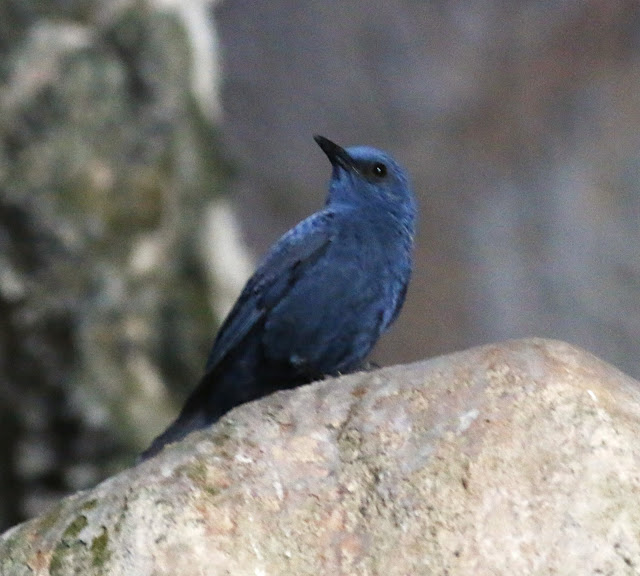Not sure why there are no bird photos in May'2022 but I believe it might be due to the rainy season at that time. I am more incline towards butterflies nowadays so photos of birds are usually incidental. Here are a few which I managed to take.
This should be a male Blue Rock Thrush.
A lime stone cave in Ipoh is probably the only place which you will have a good chance of seeing this uncommon thrush in Peninsular Malaysia.
They are located at the same vicinity as the Blue Rock Thrush but you can probably see them more often than the Thrush.
There is a healthy population of Java Sparrow in that area and probably the only place in Malaysia which you can safely have a good chance to see this species of finch.
Initially I thought I am seeing a new bird species but luckily a more seasoned birder pointed out that it was a juvenile White Breasted Swallow.
This should be a female Ruby-cheeked Sunbird whacking a caterpillar.
Caterpillars have strong tiny claws which they use to cling on leaves and I saw this sunbird had a hard time trying to peel it from the leaves.
Recently as I was looking for some butterflies in the forest edge, I came across this big coucal.
My initial guess was it should be a Greater Coucal but after posting its photos on FB, I was surprisingly been informed that it is a Short-toed Coucal !
Although its size is big (which probably mean that it could be a female) but its tail is short according to the experts. So it's one big lifer for me this year.
On the way to see rare butterflies, I came across this female Oriental-pied Hornbill. This is probably the most friendliest hornbill you would come across in Malaysia. They have probably accustomed to human being's infrastructure. This hornbill was seen just after dawn.
Sometime in early August this year, the FB pages have been lighted up with the presence of a friendly kingfisher.
Birders as far as Singapore hired a van just to see this Blue-banded Kingfisher and it did not disappoint them. I went to the KF port in late August but after waiting just under an hour it flew in and perched at the man-made perch to the delight of those 'hungry' birders. According to the early birders there, it came as early as 7.30am and then again at 10.00am. I guess I was lucky because I was there at around 9.00am. After that it didn't appear again for the rest of the day. Luckily I left the port as soon after I took a few photos of it because I have already seen one at Perdik many years back.
While waiting for the above Blue-banded Kingfisher, another kingfisher came to entertain those 'hungry' twitchers.
This Rufous-backed Kingfisher also flew in quietly. After grabbing a small fish at the small stream below, it flew off. Other birds which came were a White-chested Babbler and a Yellow-eared Spiderhunter.
THAT'S ALL FOR NOW FOLKS !!




































































